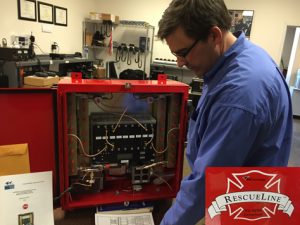Can You Hear Me Now?
 It never fails. You’re on an important call while on the go, and as soon as you walk into a large building — boom! The call is gone. All those heavy beams and piles of concrete have cut off your signal.
It never fails. You’re on an important call while on the go, and as soon as you walk into a large building — boom! The call is gone. All those heavy beams and piles of concrete have cut off your signal.
For first responders, signal disruption is not just an annoyance, but a serious problem — a safety hazard. But setting up public communications systems that will effectively penetrate large, dense buildings is complex and unrealistically expensive.
Fortunately, there is a more realistic option for ensuring reliable communications inside buildings. Bidirectional amplifiers (BDAs) and distributed antenna systems (DAS) enable radio coverage in large buildings, from apartments to offices to warehouses. Even tunnels and extended groups of structures such as college campuses can be ensured of full communications coverage with the system.
BDAs extend the range of an existing radio system by boosting and amplifying in-building signals. High-end BDAs work with a variety of frequencies, such as VHF, UHF, 7/800, and cellular. Because they are a highly effective means of ensuring reliable communication for first responders, BDAs are included as a requirement in the 2013 NFPA 72 code.
[sidebar]Where else might BDAs be implemented to prevent signal disruption? The systems are increasingly popping up in buildings such as:- Schools
- City/County Offices
- Libraries
- Recreation Centers
- Medium/Large Industry
- Hospitals
- Basement/Below Grade Levels
- LEED-Certified Buildings
- Shopping Centers
- And more!
- Communication requirements are becoming a higher priority.
- Safety agencies are becoming increasingly aware of the advantages of having a BDA in problematic areas.
- Cities and counties don’t have to foot the bill; including the requirement in the fire code makes the building owner responsible for providing the system. BDAs are affordable at the level of the individual building.
BDAs are especially beneficial in large public buildings — for example, the new AT&T Dallas Cowboys stadium was built with an integrated BDA. In our local region, RACOM provided and installed the BDA/DAS at Carver-Hawkeye Arena for the University of Iowa in Iowa City.
But BDAs aren’t just for new construction. If the code is adopted, it applies to both new and existing buildings and must be integrated with the building’s fire systems.
Cities and counties that are considering adopting the BDA requirement in the NFPA 72 code will want to connect building owners and electrical contractors with technicians who understand the systems and are trained to install and maintain them correctly.
[cta]RACOM’s networking experts can provide, install, and maintain BDA systems for any location. Call RACOM at 800-722-6643 or email us at info@racom.net to learn more.[/cta]
